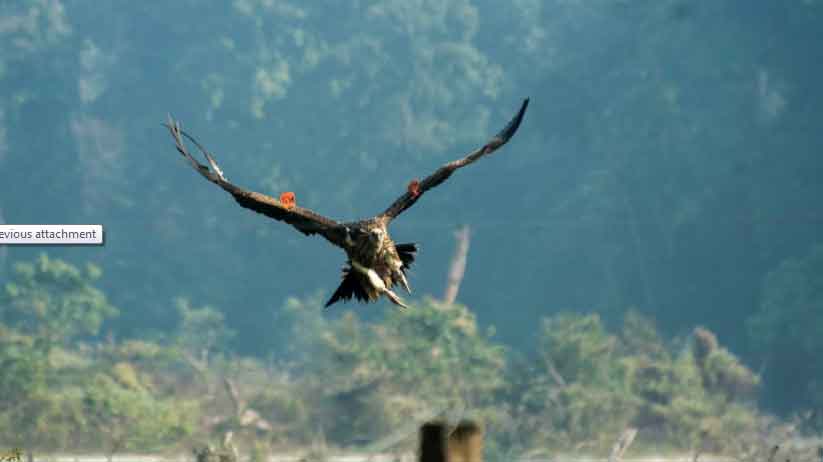Situated outside the Buxa Tiger Reserve of West Bengal, the Rajabhatkhawa center is the same centre were the first successful captive breeding of vultures took place. On Tuesday (December 18), the center released vultures into wild for the first time in the world. The Rajabhatkhawa centre earlier provided shelter to two-three rescued vultures and was founded as the second such center in the world following Pinjore, Haryana. The successful breeding done here has drawn attention from all corners.
The decision to release the vulture was taken after the forest officers' meeting. Eventually, 6 vultures were released in wild on Tuesday with a satellite transmitter. Tags has been placed in their body for continuous monitoring as the vultures can fly as long as 100 km per day. The experts keep constant monitoring through CCTV in the aviaries.
The experts have chosen Himalayan Griffon or Himalayan vulture, a surrogate species for this soft release. The release aviary has already been prepared. Since the vultures are not familiar to nature initially they were released in release aviary. It is made such a way that the vultures could be able to interact with nature as well as with the wild birds and get acclimatized. Then there was a trial run with dummy satellite transmitters.
There are different types of aviaries kept in Rajabhatkhowa center the like display aviaries, hospital aviaries and release aviary for soft release. A vulture finds a partner and after mating a vulture lays only one egg. The mother and the father incubate the egg alternately for 55 to 60 days. The vultures live in a colony and interestingly monogamous.
It all started long back in 2006 when the population of vultures has gone down badly. Mostly due to the rampant use of Diclofenac in cattle. It was like an epidemic where the entire vulture population went under threat. The white back vulture population faced a 99.9% decrease whereas slender-billed and long-billed vulture populations faced 97% decrease. Till date, the number of captive breeding is 57 in the center. And the total number of vultures has gone up to 131.
















